A native ornamental grass (Poaceae) with attractive blue-green foliage. Purplish bronze seed heads and yellow-orange leaves make for great fall interest in the landscape. It is attractive planted en masse and would make an excellent addition to a rain garden. It performs best in average, dry to medium moisture, well-drained soil in full sun. However, it does tolerate a wide range of soil conditions including infertility and clay. It has drought resistance once established. It is well-adapted to southern climates as it tolerates high heat and humidity. It is found naturally in a wide range of moist to dry habitats. Cut back to the ground in early spring to promote new attractive growth. There are many cultivars available, which means it can be difficult to find the straight species in trade.
$12.99 – $89.99
| Options | 6-Pack, 9-Pack, Single |
|---|---|
| Common Name | – |
| Type | Ornamental grass |
| Family | Poaceae |
| Native Range | Eastern North America |
| Zone | 3, 4, 5, 6, 7, 8, 9 |
| Height Range (ft.) | 2.00 to 4.00 |
| Spread (ft.) | 1.50 to 2.00 |
| Bloom Time | August, December, February, January, November, October, September |
| Bloom Description | Purplish bronze |
| Sun | Full Sun |
| Water | Dry, Medium |
| Maintenance | Low |
| Suggested Use | Rain Garden |
| Tolerate | Air Pollution, Black Walnut, Deer, Drought, Dry Soil, Erosion, Shallow-Rocky Soil |
| Flower | Insignificant |
| Leaf | Good Fall |
| Other | Winter Interest |
“Little Bluestem is a perennial, warm-season grass that may grow to 5 feet. The leaves and stems frequently have a bluish cast in summer, while the fall color is a very warm copper that does not fade throughout winter. ” (North Carolina Extension)
Faunal Associations:
“The caterpillars of several skippers feed on the foliage of Little Bluestem, including Atrytonopsis hianna (Dusted Skipper), Hesperia metea (Cobweb Skipper), Hesperia ottoe (Ottoe Skipper), Hesperia sassacus (Indian Skipper), Nastra lherminier (Swarthy Skipper), and Polites origenes (Crossline Skipper); see Bouman et al. (2006). A skipper looks like a cross between a small moth and a small butterfly. Skippers are common in prairies and other open areas where Little Bluestem and other grasses occur. Many grasshoppers also feed on the foliage (see Grasshopper Table); grasshoppers are common in the same habitats as skippers and they are an important source of food for many insectivorous birds. Other insects that feed on Little Bluestem include Diapheromera velii (Prairie Walkingstick), the leaf-mining beetle Anisostena nigrita, the thrips Illinothrips rossi, Prosapia ignipectus (Black Spittlebug), the Delphacid planthopper Delphacodes parvula, and such leafhoppers as Flexamia albida, Flexamia clayi, Flexamia delongi, Flexamia graminea, Flexamia prairiana, Athysanella incongrua, and Laevicephalus unicoloratus (Arment, 2006; Clark et al., 2004; Hamilton, 1982; Stannard, 1968; Panzer et al., 2006; Haarstad, 2002; FLOW, 2014; Hicks, 2014). The Field Sparrow, Tree Sparrow, Slate-Colored Junco, and other small songbirds eat the seeds, particularly during the winter. The foliage of Little Bluestem is quite palatable to bison, cattle, and other hoofed mammalian herbivores.” (Hilty)
There are no reviews yet.

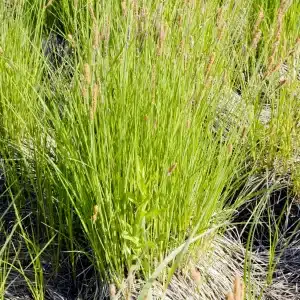
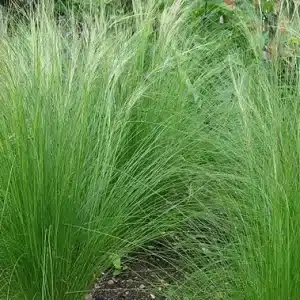
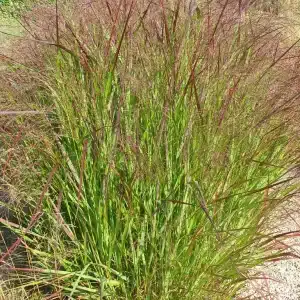
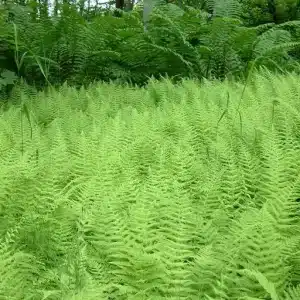
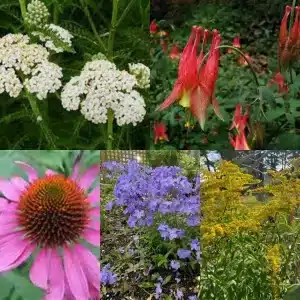
BUYING HIGH QUALITY PLANTS HAS NEVER BEEN EASIER
Our plants are easy to order, plant, and enjoy! Bringing pollinators to your property improves vegetable yields – Feed the bees!
Sign up for our email list!
Copyright © 2024 Bumbee’s | Web design and SEO by Searles Graphics